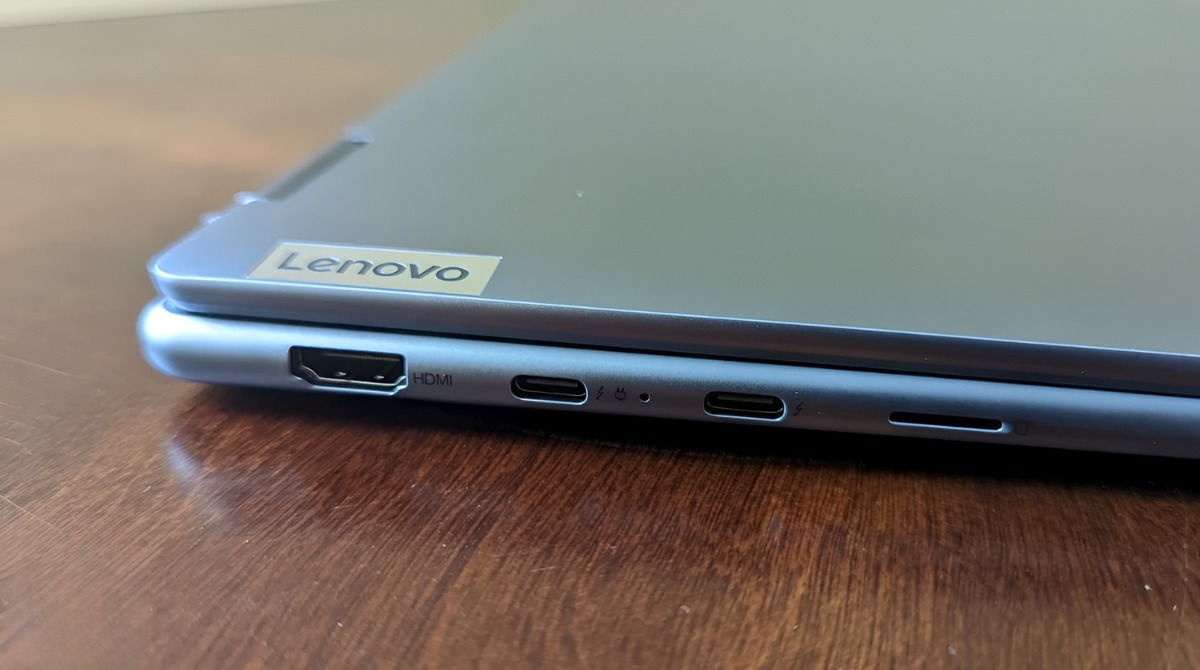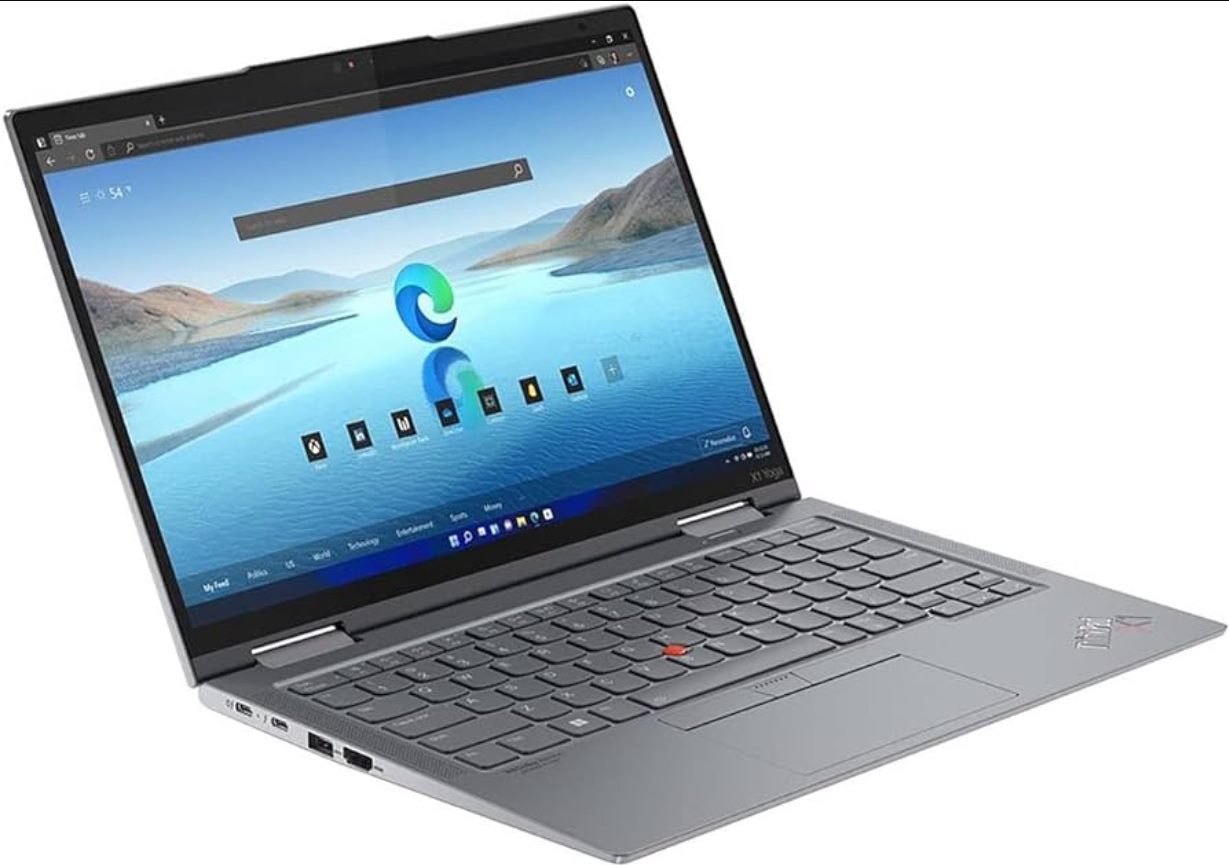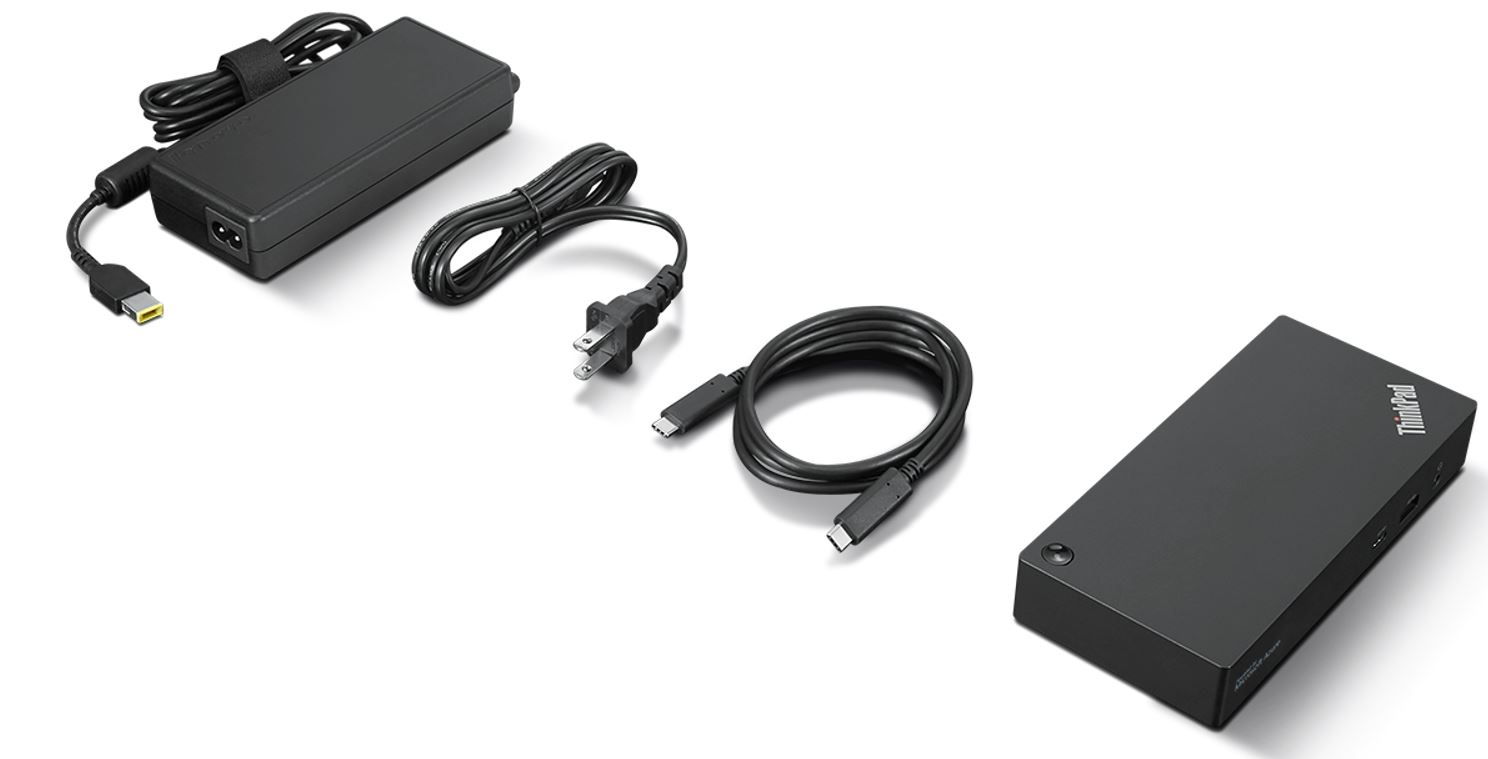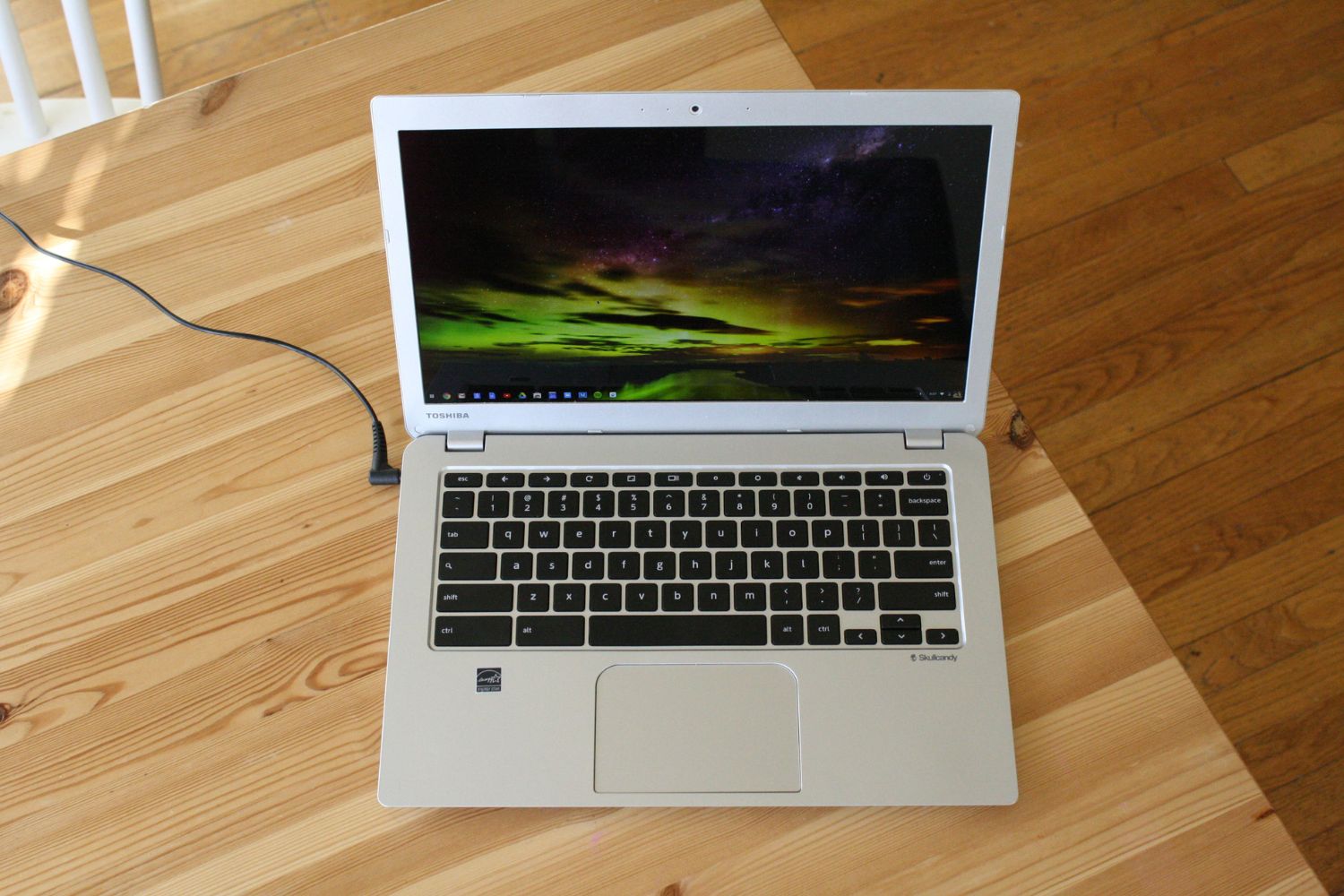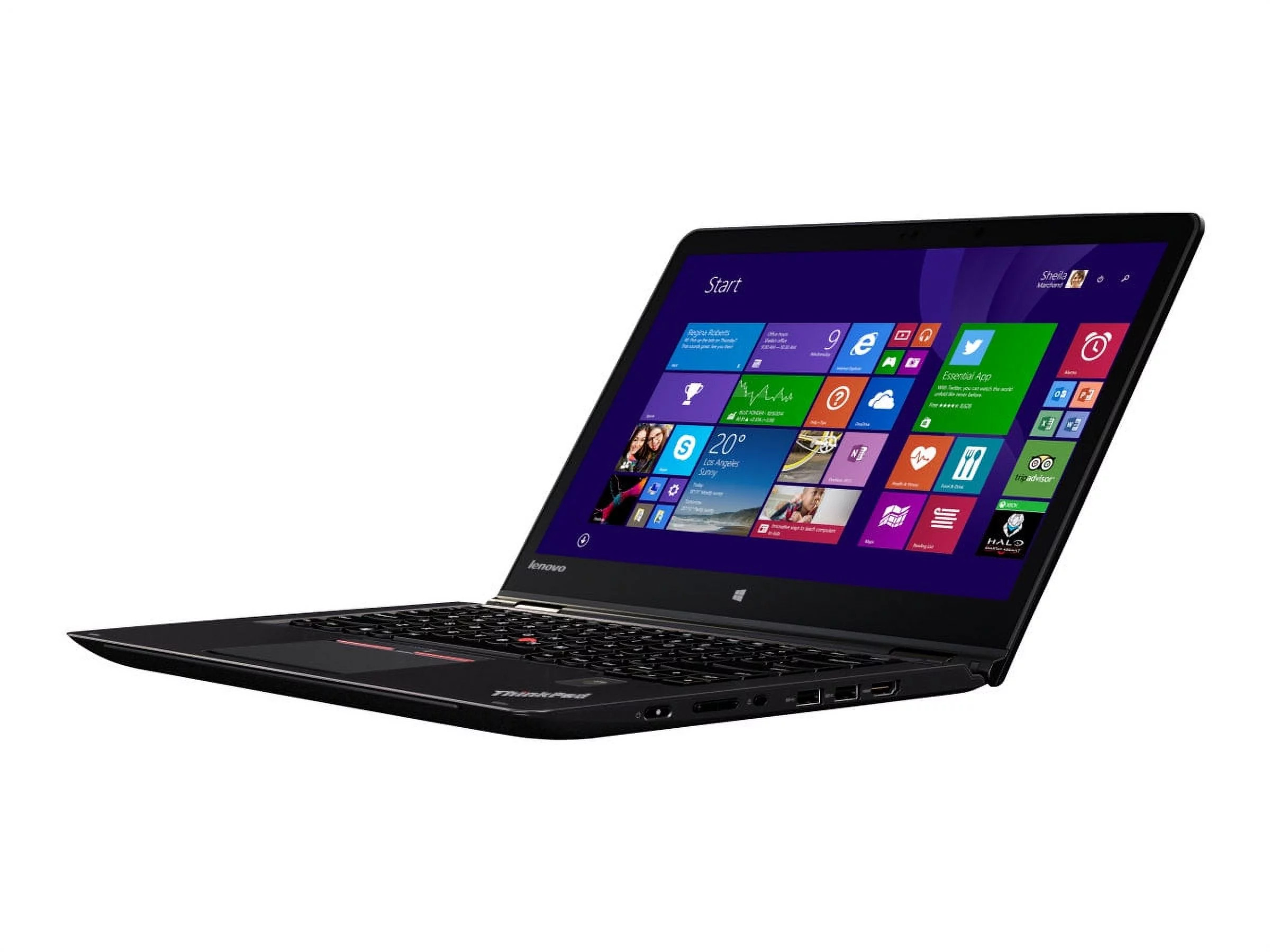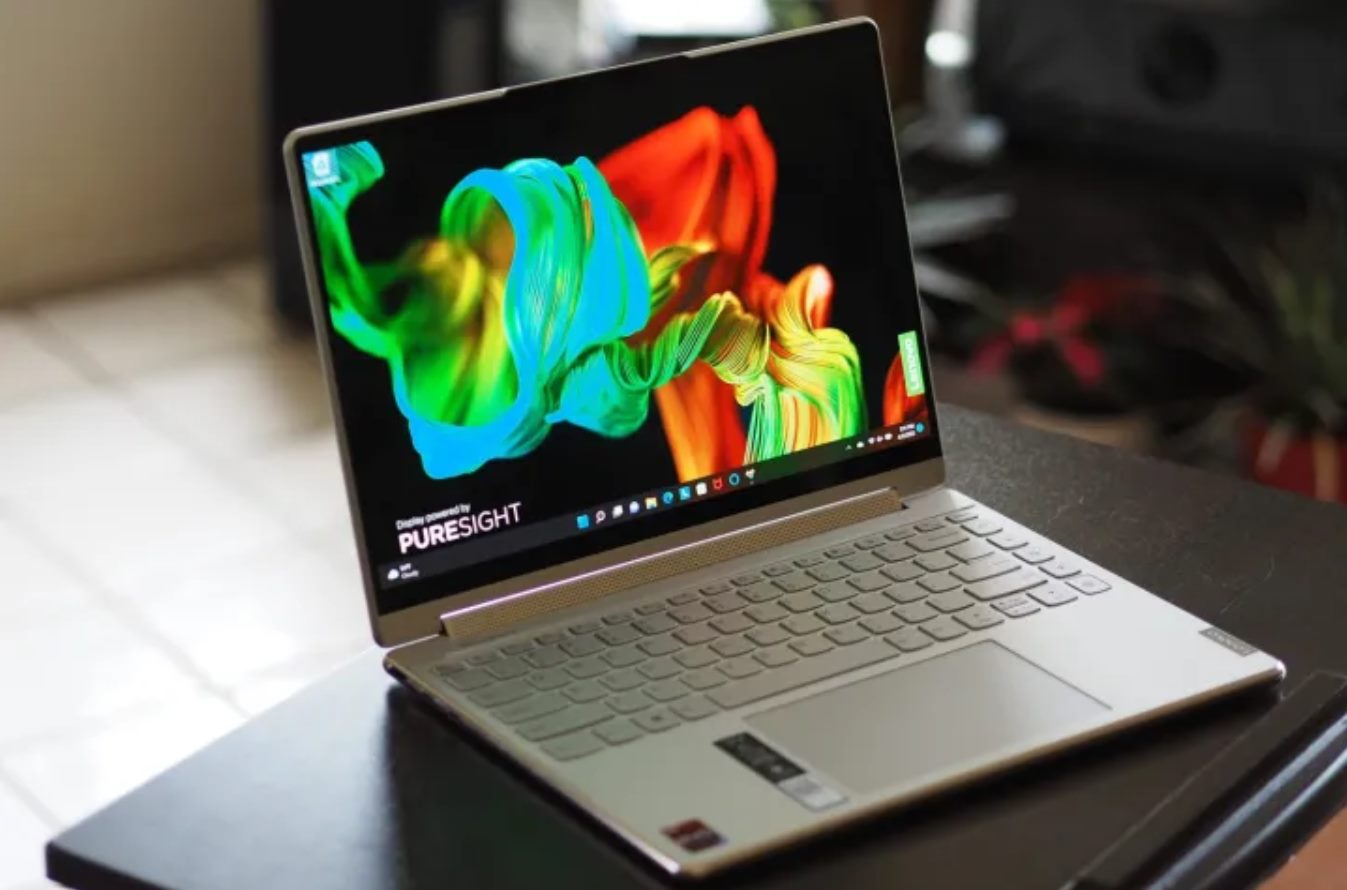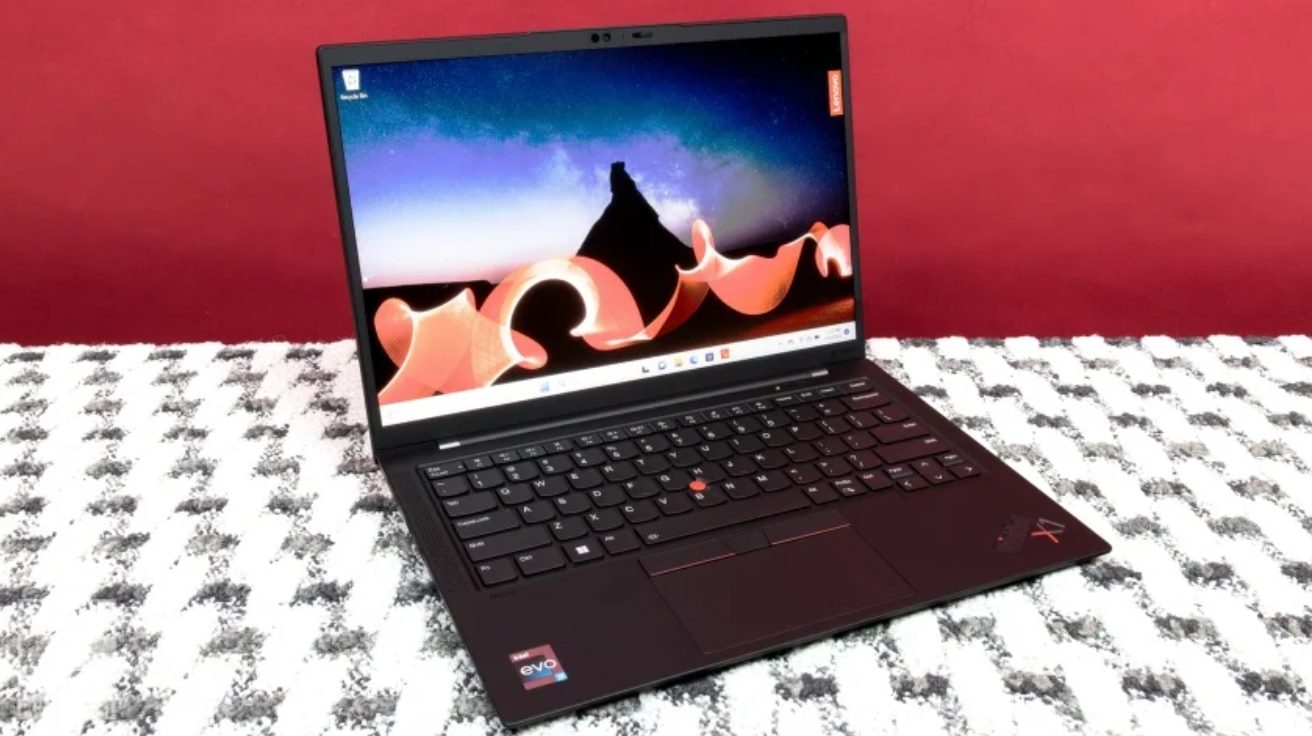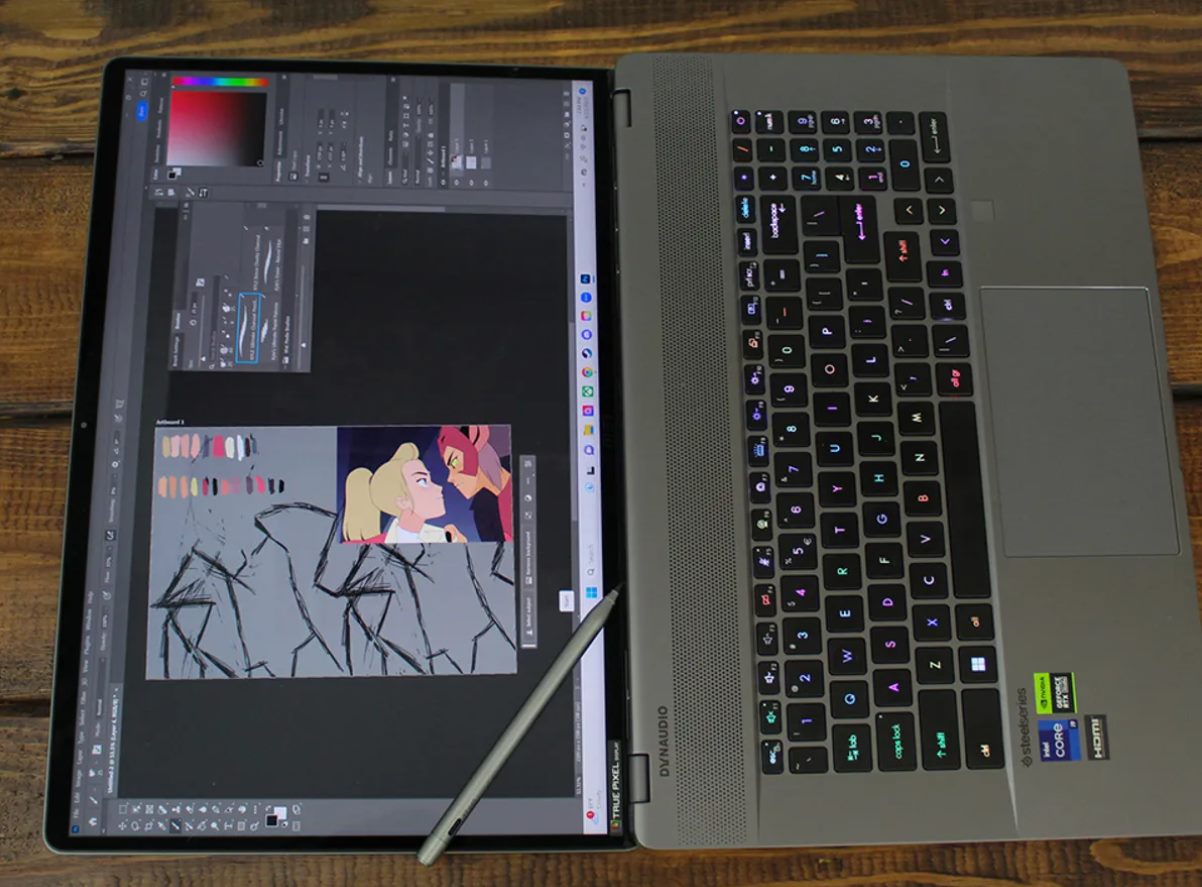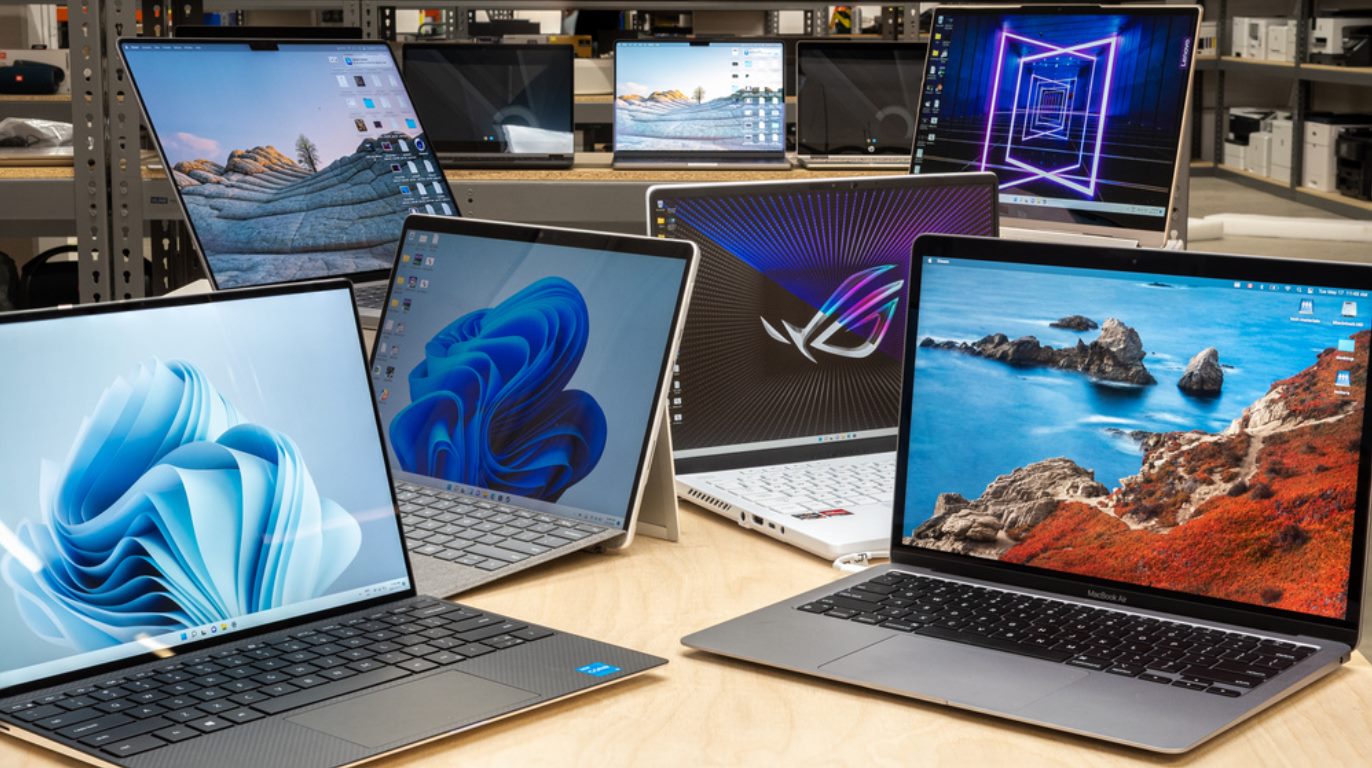Introduction
Welcome to our guide on HDMI ports in Lenovo Yoga Ultrabooks! If you’re a proud owner of a Lenovo Yoga Ultrabook or considering purchasing one, it’s important to understand the different types of HDMI ports available and what they offer. HDMI (High-Definition Multimedia Interface) ports are widely used to connect laptops to external displays or TVs, providing high-quality audio and video transmission.
With the rising popularity of multimedia content consumption and the need for seamless connectivity, HDMI ports have become essential features in modern laptops, including the versatile Lenovo Yoga Ultrabook series. Whether you’re a professional needing to present your work on a larger screen or a casual user wanting to enjoy movies and games on your television, understanding your Yoga Ultrabook’s HDMI capabilities will enhance your overall experience.
In this guide, we will explore the basics of HDMI ports and dive into the specific HDMI port options available in Lenovo Yoga Ultrabooks. We will also discuss the differences between HDMI 1.4 and HDMI 2.0, as well as explore various HDMI adapter options that can expand the connectivity possibilities of your Lenovo Yoga Ultrabook.
By the end of this guide, you will have a comprehensive understanding of the HDMI port options in Lenovo Yoga Ultrabooks and be equipped to make informed decisions regarding your multimedia needs. So, let’s get started and discover the world of HDMI ports in Lenovo Yoga Ultrabooks!
HDMI Port Basics
Before we delve into the specific HDMI port options in Lenovo Yoga Ultrabooks, let’s first understand the basics of HDMI ports. HDMI (High-Definition Multimedia Interface) is a widely used digital interface for transmitting high-quality audio and video signals between devices.
HDMI ports are commonly found in laptops, TVs, gaming consoles, and other multimedia devices. They provide a single cable connection that carries both audio and video signals, eliminating the need for multiple cables and connectors.
One of the key advantages of HDMI ports is their ability to transmit high-definition content. With HDMI, you can enjoy crisp and clear images, vibrant colors, and immersive audio, making it ideal for watching movies, playing games, and giving presentations.
HDMI ports come in different versions, with each version offering varying capabilities and features. The most common versions include HDMI 1.4 and HDMI 2.0.
HDMI 1.4 supports a maximum resolution of 4096×2160 pixels and a refresh rate of 30Hz. It also supports 3D content, Ethernet connectivity, and audio return channel (ARC) functionality, which allows the audio to be sent back from the display device to the source device.
On the other hand, HDMI 2.0 provides even higher bandwidth and capabilities. It supports a maximum resolution of 3840×2160 pixels, also known as 4K Ultra HD, at a smooth 60Hz refresh rate. HDMI 2.0 also supports wider color gamut, higher bit depth, and enhanced audio formats like Dolby Atmos and DTS-HD Master Audio.
It’s important to note that the HDMI version supported by a device is determined by both the HDMI port on the device and the HDMI cable used. To take full advantage of the capabilities of HDMI 2.0, you need a device with an HDMI 2.0 port and a high-speed HDMI 2.0 cable.
Now that we have a solid understanding of HDMI port basics, let’s explore the different HDMI port options available in Lenovo Yoga Ultrabooks to determine what kind of HDMI port these laptops offer.
Lenovo Yoga Ultrabook Overview
The Lenovo Yoga Ultrabook series is known for its sleek design, flexible form factor, and powerful performance. These convertible laptops offer a unique 2-in-1 experience, allowing users to seamlessly switch between laptop and tablet modes.
Lenovo Yoga Ultrabooks are designed to cater to a wide range of needs, from casual web browsing and content consumption to professional work tasks and creative projects. They feature high-resolution displays, powerful processors, ample storage options, and long-lasting battery life, ensuring a smooth and efficient computing experience.
Whether you’re a student, professional, or creative individual, the Lenovo Yoga Ultrabook series offers a variety of models to choose from, each with its own set of specifications and features. From the entry-level Yoga C series to the high-end Yoga X1 series, there’s a Yoga Ultrabook to suit every budget and requirement.
One of the key attractions of the Lenovo Yoga Ultrabooks is their portability and versatility. With their lightweight and slim design, these laptops are easy to carry around, making them ideal companions for on-the-go productivity and entertainment. The 360-degree hinge allows for flexible usage, enabling you to use the device in various modes such as laptop, tablet, tent, or stand.
In addition to their impressive hardware, Lenovo Yoga Ultrabooks also come with a range of connectivity options, including USB ports, SD card slots, audio jacks, and, of course, HDMI ports. The HDMI port on a Lenovo Yoga Ultrabook is a crucial feature for connecting your laptop to external displays, projectors, or TVs, allowing you to extend your screen real estate, mirror your display, or enjoy multimedia content on a larger screen.
Now that we have an overview of the Lenovo Yoga Ultrabooks and their versatile features, let’s explore the different types of HDMI ports you may come across in these laptops.
Types of HDMI Ports
When it comes to HDMI ports, there are different types available, each with its own specifications and capabilities. Understanding the various types of HDMI ports will help you determine the compatibility and functionality of your Lenovo Yoga Ultrabook.
The most common types of HDMI ports you may encounter are:
- HDMI Type A: This is the standard HDMI port that you will find on most devices, including Lenovo Yoga Ultrabooks. It features 19 pins and supports both video and audio transmission. HDMI Type A ports are capable of transmitting high-definition content up to 1080p resolution.
- HDMI Type C (Mini HDMI): The Mini HDMI port is a smaller version of the standard HDMI port. It is commonly found on smaller devices such as tablets, digital cameras, and some older models of laptops. To connect a device with a Mini HDMI port to a display or TV with a standard HDMI port, you will need a Mini HDMI to HDMI adapter or cable.
- HDMI Type D (Micro HDMI): The Micro HDMI port is an even smaller version of the HDMI port. It is typically found on compact devices such as smartphones and some tablets. Similar to the Mini HDMI port, you will need a Micro HDMI to HDMI adapter or cable to connect a device with a Micro HDMI port to a standard HDMI port.
- HDMI Type E: The Type E HDMI port is a specialized port used for automotive applications. It is not commonly found in consumer devices.
It’s important to note that the HDMI port type supported by your Lenovo Yoga Ultrabook will depend on the specific model and configuration. Most models of the Yoga Ultrabook series, including the Yoga C and Yoga X1 series, come equipped with HDMI Type A ports, which are compatible with standard HDMI cables.
Now that we have explored the different types of HDMI ports, let’s take a closer look at the HDMI port found on Lenovo Yoga Ultrabooks to understand its specifications and capabilities.
HDMI Port on Lenovo Yoga Ultrabook
The HDMI port on Lenovo Yoga Ultrabooks is a crucial feature that allows you to connect your laptop to external displays, projectors, or TVs for an enhanced multimedia experience. Let’s explore the specifications and capabilities of the HDMI port found on Lenovo Yoga Ultrabooks.
Most models of the Lenovo Yoga Ultrabook series come with an HDMI Type A port. This standard-sized port supports both video and audio transmission, allowing you to enjoy high-definition content on a larger screen with immersive sound.
The HDMI port on Lenovo Yoga Ultrabooks is typically located on the side or back of the laptop. It is designed to provide easy access and convenient connectivity for external display devices. Keep in mind that the specific location of the HDMI port may vary depending on the model and design of your Yoga Ultrabook.
When using the HDMI port on a Lenovo Yoga Ultrabook, you can extend your desktop display to an external monitor or use the external display as a mirrored screen. This is particularly useful for tasks such as giving presentations, multitasking with multiple screens, or enjoying multimedia content on a larger display.
The HDMI port on Lenovo Yoga Ultrabooks supports a maximum resolution of 1920×1080 pixels, also known as Full HD or 1080p. This ensures crisp and detailed visuals when connected to compatible displays. However, it’s important to note that the actual resolution displayed on the external monitor will depend on the capabilities of the monitor itself.
In addition to video transmission, the HDMI port on Lenovo Yoga Ultrabooks also supports audio transmission. This means you can enjoy high-quality sound through the external display or connected audio devices without the need for additional cables or connections.
To connect your Lenovo Yoga Ultrabook to an external display or TV, you will need an HDMI cable that matches the HDMI port on your laptop and the HDMI input on the display device. High-speed HDMI cables are recommended for optimal performance and compatibility.
Now that we have explored the HDMI port on Lenovo Yoga Ultrabooks, let’s compare the differences between HDMI 1.4 and HDMI 2.0 to better understand their capabilities and determine which version may be suitable for your needs.
HDMI 1.4 vs HDMI 2.0
When it comes to HDMI versions, there are two commonly used versions – HDMI 1.4 and HDMI 2.0. Understanding the differences between these versions can help you make informed decisions about the capabilities and compatibility of your Lenovo Yoga Ultrabook.
HDMI 1.4 is an older version that supports a maximum resolution of 4096×2160 pixels, also known as 4K resolution, but at a limited refresh rate of 30Hz. It also supports 3D content, allowing you to enjoy immersive three-dimensional visuals when paired with a compatible display. HDMI 1.4 ports have 19 pins and support both video and audio transmission. They also offer additional features such as HDMI Ethernet Channel (HEC) for internet connectivity over HDMI, Audio Return Channel (ARC) for sending audio back to the source device, and support for Consumer Electronics Control (CEC) to control multiple devices with a single remote.
HDMI 2.0, the newer version, offers significant improvements over HDMI 1.4. It supports a maximum resolution of 3840×2160 pixels, also known as 4K Ultra HD, at a smooth 60Hz refresh rate. This allows for smoother and more fluid motion in high-resolution content. HDMI 2.0 ports also provide support for wider color gamut, higher bit depths, and enhanced audio formats like Dolby Atmos and DTS-HD Master Audio. Additionally, HDMI 2.0 cables have higher bandwidth capabilities, ensuring optimal data transfer between devices.
It’s important to note that the HDMI version supported by your Lenovo Yoga Ultrabook depends both on the HDMI port on the device and the HDMI cable used. If your Yoga Ultrabook is equipped with an HDMI 1.4 port, you’ll need a high-speed HDMI 1.4 cable to take full advantage of its capabilities. Similarly, if your Yoga Ultrabook has an HDMI 2.0 port, you’ll need a high-speed HDMI 2.0 cable for optimal performance.
When choosing between HDMI 1.4 and HDMI 2.0, consider the specific requirements of your multimedia activities. If you plan to enjoy high-resolution 4K content with a higher refresh rate, HDMI 2.0 will offer a better experience. However, if you primarily use your Yoga Ultrabook for regular tasks and don’t require the advanced features and specifications of HDMI 2.0, HDMI 1.4 will suffice.
With a clear understanding of HDMI 1.4 and HDMI 2.0 and their respective capabilities, let’s explore the various HDMI adapter options that can expand the connectivity possibilities of your Lenovo Yoga Ultrabook.
HDMI Adapter Options for Lenovo Yoga Ultrabook
While Lenovo Yoga Ultrabooks come equipped with HDMI ports, there may be times when you need to connect your laptop to a display or TV that doesn’t have an HDMI input. In such cases, HDMI adapters provide a convenient solution to bridge the connectivity gap. Here are some HDMI adapter options for your Lenovo Yoga Ultrabook:
- HDMI to VGA Adapter: If you need to connect your Yoga Ultrabook to a monitor or projector with a VGA input, an HDMI to VGA adapter is essential. This adapter allows you to convert the digital HDMI signal to analog VGA to ensure compatibility between your laptop and the display device. This is particularly useful for older monitors or projectors that do not have HDMI inputs.
- HDMI to DVI Adapter: Some displays or projectors may have DVI (Digital Visual Interface) inputs instead of HDMI. In such cases, an HDMI to DVI adapter will come in handy. This adapter allows you to convert the HDMI signal to DVI, enabling you to connect your Yoga Ultrabook to a DVI-compatible display.
- HDMI to DisplayPort Adapter: If you wish to connect your Lenovo Yoga Ultrabook to a monitor or display with a DisplayPort input, an HDMI to DisplayPort adapter is required. This adapter allows for seamless conversion of the HDMI signal to DisplayPort, ensuring compatibility and enabling you to extend or mirror your screen on a DisplayPort-enabled monitor.
- HDMI to HDMI Coupler: Sometimes, you may need to extend the length of your HDMI cable due to distance limitations. In such cases, an HDMI coupler can be used. This simple adapter allows you to connect two HDMI cables together, effectively extending the reach and providing the necessary flexibility for your setup.
When choosing an HDMI adapter for your Lenovo Yoga Ultrabook, ensure that the adapter is compatible with your specific model and the type of display or device you are connecting to. Additionally, it’s always a good idea to opt for high-quality adapters from reputable brands to ensure reliable performance and optimal signal transmission.
By utilizing the appropriate HDMI adapter options, you can expand the connectivity possibilities of your Lenovo Yoga Ultrabook and ensure seamless compatibility with a wide range of display devices.
Now that we’ve explored the various HDMI adapter options available for Lenovo Yoga Ultrabooks, let’s wrap up our guide with a recap of the key points we’ve covered.
Conclusion
In this comprehensive guide, we have explored the HDMI port options in Lenovo Yoga Ultrabooks and gained a better understanding of their specifications and capabilities. HDMI ports in Lenovo Yoga Ultrabooks, typically HDMI Type A, provide you with the ability to connect your laptop to external displays, projectors, or TVs, opening up a world of enhanced multimedia experiences and productivity.
We have also discussed the different types of HDMI ports, including HDMI Type A, Type C (Mini HDMI), and Type D (Micro HDMI), along with their respective adapters. Understanding these port types will help you determine the compatibility and required adapters for connecting your Lenovo Yoga Ultrabook to various display devices.
Furthermore, we compared the differences between HDMI 1.4 and HDMI 2.0, highlighting the key features of each version. HDMI 2.0 offers improved capabilities such as support for 4K resolution at a higher refresh rate, wider color gamut, and enhanced audio formats. However, HDMI 1.4 is still suitable for regular tasks and may be sufficient for your needs.
To expand the connectivity possibilities of your Lenovo Yoga Ultrabook, we explored HDMI adapter options, including HDMI to VGA, HDMI to DVI, HDMI to DisplayPort, and HDMI couplers. These adapters allow you to connect to display devices with different input types, ensuring compatibility and convenience.
By understanding the HDMI port options, types, versions, and adapter choices for your Lenovo Yoga Ultrabook, you can make informed decisions and enhance your multimedia experiences, presentations, and productivity.
We hope this guide has provided you with valuable insights into HDMI ports in Lenovo Yoga Ultrabooks and has equipped you with the knowledge to make the most of your laptop’s capabilities. So go ahead, connect your Lenovo Yoga Ultrabook to external displays, enjoy high-definition audio and video, and unlock new possibilities!







